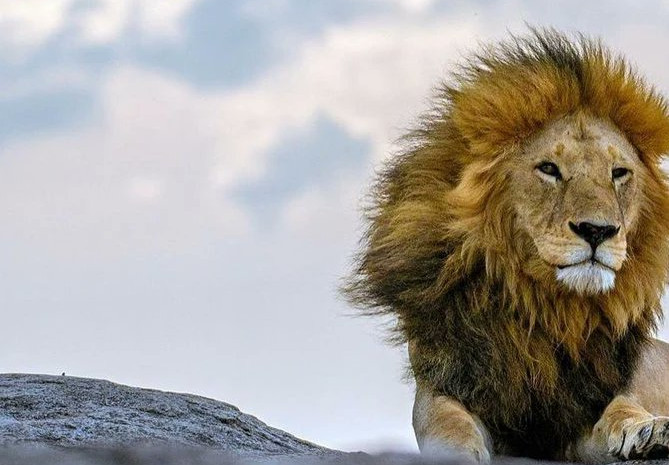From the Department of Animal, Aquaculture, and Range Sciences (DAARS)
Sokoine University of Agriculture (SUA)
Lions are found in Africa south of the Sahara and India’s northwest, where the savanna is their main natural habitat with plentily of other game animals such as gazelles, antelope, impala, wild pigs, wildebeest, and zebra. Larger animals, like buffalo, giraffes, elephants, and even crocodiles are also found to contribute as a prey list to this giant cat. Lions are classified into two subspecies, which are the African lion (Panthera leo leo) accounting for 98%, and the remaining 2% are the Asiatic lion (Panthera leo persica), all come with different appearances.
The African lions found in Sub-Saharan Africa have more robust manes and darker colors, while the Asiatic lion is relatively smaller and has a light golden color. The highly populated lion (Panthera leo), was once widely distributed across most of Africa and parts of Europe and Asia. Currently, Panthera leo is only confined to a number of isolated areas in Africa as shown on the map below. At present, lions occupy less than 8% of their historic range. Over 80% of the world’s population of lions disappeared in the last century. Hundred of years ago there were likely as many as 200,000 lions living in the wild of Africa. Lions have totally disappeared from 12 sub-Saharan countries in recent decades. The latest surveys indicated the number of wild lions is around 30,000. Tanzania is the home to an estimated 50% of the lions’ populations worldwide, with over 3,500 lions population living in the Serengeti ecosystem alone “The Lion Gangland”.
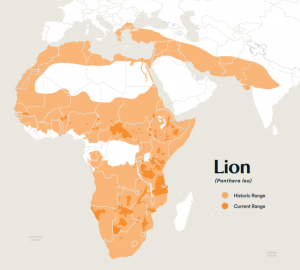
The current worldwide distribution of Lions
It is well known that lions are the monarchs of the jungle due to their raw power and strength. Lions have taken all the credit for being the strongest, bravest, and fiercest animal in the wild to be named the King of the beasts. Lions are referred to as the Kings of the Jungle due to their enormous power for domination and peculiar skills of hunting. Normally lions stay at the top of the food chain and are the most dominant force in African wildness. Lions are among the most feared animals in the wild from ferocious nature and higher ability to dominate their habitat. Lions are featured as apex land predators as they don’t have natural enemies. There are no animal hunting matured lions, only a group of hyenas and wild dogs that will sometimes kill and eat lion cubs.
Unlike many other animals, lions are pretty and well-organized social animals. They do live in a pride of up to thirty close related members led by a male lion. Normally, males defend the pride’s territory, marking the area with urine, roaring menacingly to warn intruders, and chasing off animals that encroach on their turf. The male lions’ group is usually made up of brothers, half-brothers, or cousins and would have grown up in the same strong coalition. Sometimes, the pride might also include a few unrelated males, but there is always a dominant male in that nuclear family. A line pride has a clear social hierarchy, with one dominant lion as the king of the pride that ensures the group works together to take down prey and his pride’s continuity in the wild. In Serengeti Plains, there are about 300 lion prides, with relatively 15 or more lions depending on the availability of food and water. In Serengeti, many prides of lions are clustered in an area with a home range of approximately 50 square kilometers. Very few lion pride reach the status of Super Pride, with 5-6 strong males ruling the successful pride. Keeping cubs alive to maturity is Super Pride’s ultimate goal. However, plentiful prey and strong pride males are the keys to success in the wild.
It is obviously natural that other male lions out of the group will fight with the head of the pride trying to take over his territory. They are only out-competed by other male lions who wish to overthrow their territories and continue their own genetic line as the law of natural selection emphasizes the “survival of the fittest”. If a new male managed to overthrow the pride, he will kill all the cubs, a phenomenon known as infanticide. This will physiologically fasten the females coming into heat and allows him to mate. Wild lions reproduce approximately every two years, producing litters of 2 – 4 after a gestation period of 108 days. This will ensure only his cubs will be produced to create new generations with his own bloodlines. In this case, a strong male lion always put his life on the line for his pride, for his females, and for his young. Having such an important role as the leader and defender of the pride, the lion king has been omitted from the hunting duties as this activity is left to the lionesses. However, other male lions that are within the pride setup will be needed in the hunting process when they are required to take down prey that is too large for the females to hunt on their own, such as buffalo, giraffe, and even elephants in some cases. The lionesses serve to provide for the pride and the males that are dominant over that pride. Normally, the males feed first, often allowing the cubs to join or feed after the males have had their share and then the females are often left to fight over the remains, leaving them hungry. Because of this, they will often attempt to hunt again.
In the wild male lions seldom live around 8 to 10 years, while females have a lifespan of 10-15 years. Male lions typically have a shorter lifespan than lionesses, chiefly because of the hassles and frequent attacks by other lions. When young male lions at the age of two years are forced to leave the safety net of their mothers’ pride and become nomadic gathering in small groups of males often born in the same pride or lone nomadic young males to fend for themselves. This scenario also strictly controls the inbreeding among the family members. While away, they will learn the skills of patience, fighting, and experience hunting for themselves, allowing them to become strong enough to fight for leadership in the pride or become solitary lionesses. Males rarely remain part of the pride for more than three to five years. A pride with older males is ripe for being takeover by groups of young nomad males.
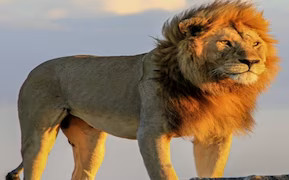
The Legendary Lion King – Bob Junior “Snyggve”
Of recent, the formidable head of a pride of lions has been overthrown in a vicious attack by younger rivals. A famous lion known as the king of the Serengeti National Park in Tanzania called Bob Junior “BJ” together with his coalition brother have been brutally killed by seven younger rivals as they want to overthrow their super pride. The Bob Junior pride was a group of two forceful males known as Bob Junior and Marley. In this taking over of this strong pride, Bob Junior’s beloved coalition brother Marley is also believed to have been killed in separate seen but seemed to be well-coordinated by the killers. Bob Junior is well known for his formidable and long-term ruler at the Namiri plains in Serengeti together with his warrior brother Marley or also known as “Joel”.
In his warrior life history, Bob Junior reigned as one of the most powerful kings in Eastern Serengeti over the Kibumbu Pride. This lion is believed to be a lineage generation from the strongest previous King in the area known as Bob named after Jamaican reggae legend Bob Marley, where his unique long and beautiful blackish manes were compared to the Bob Marley dreadlocks. Bob Marley was an equally famous lion with a blackish mane with dreads and his coalition brother, Ziggy also known as Hildur had a blonde mane with dreadlocks as well. Apart from their resemblance, Bob Junior was named after Bob Marley as he was believed to be his father. These Bob family names have been given to these lions by Asilia African’s Namiri Plains Camp for easy reference to guide tourists and researchers.

Robert Nestor Marley “Bob Marley”
Bob Junior pride was able to defend his pride from several attempts, including a recorded historical deadly fight in 2018 from the other strongest group of four males known as the killers. Over three months ago, seven organized strong lions “Saba Bora boys” invade the Bob Junior pride to plan an attempt to overthrow the well-established Kingdom of the African Savanna. Bob Junior was later killed in their usual territory battle by the aggressive attack of three younger rivals among the seven while he was attempting to defend his territory on Saturday 11th of March 2023. Normally, the lion may lose the battle for pride domination due to general weaknesses, injuries, illness, or old age. In some cases, the lion may get killed in the battle, like in Bob Junior’s case. The leading lion of the three younger rivals who kills Bob Junior has been baptized with the name Bob Killer “BK” by Serengeti Tour Guides. The lion BK seems to be the King of the Namiri Plains at the moment.
It is estimated that Bob Junior died at the age of over 12 years, making him the second recorded longest-living lion, after his dad, Bob Marley “Bob” who died at the age of 14. Over this period, Bob Marley, the longest-living lion in the history of Serengeti, produced about twelve unexceptional pride. He was born in 2004 in Central Serengeti. At his younger age he was named “C-Boy” by a Swedish woman called Ingela M. Jansson, a Field Researcher Assistant in studying Serengeti lions’. The other name of Bob Junior is “Snyggve” and his blood brother ” Tryggve” have been given by a Swedish wildlife photographer Daniel Rosengren, while these lions have only six weeks of age.
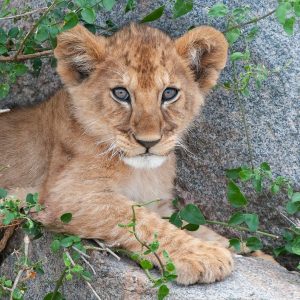
Bob Junior “Snyggve” at his six weeks of age (photo by Daniel Rosengren)
In 2008 Bob and Ziggy were first seen together in the Namiri Plains grassland. In this sole collision, they were to reign over several prides within Serengeti from 2009 to 2018. Bob is known for having survived a gang attack from a pack of five male lions, nicknamed “The Killers”, in August 2009. In 2010 a new King of the Serengeti was born in the Namiri Plains and later has known as Bob Junior. The huge Bob Junior lion was much popular among local and foreign tourists, of his “photogenic” and “coolest cat” habited in the Serengeti National Park. He was easy to spot from his size and decorated with a distinctive black mane. His luxuriant black mane reaches as low down as his belly and he is in such perfect condition as a beautiful male lion has ever seen. He is simply magnificent. Bob Junior, also known as Snyggve, described him as “legendary” at the home of the greatest wildlife migration of the Serengeti plains.
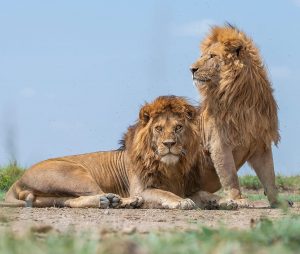
The late Kings of Namiri Plains “Snyggve” (left) and his brother”Tryggve” (right) at the age of four years and two months (photo by Daniel Rosengren)
Lions are still present in a number of large and well-managed in protected areas of the Serengeti plains, under the supervision of Tanzania National Parks Authority – “TANAPA”. The Serengeti National Park is a popular wild viewing destination in Tanzania, which is also among the largest national park in Tanzania covering 14,750 Square kilometers. Apart from Lions, the other big cat found in Serengeti National Parks is Leopards and Cheater. The National Park is also the home of other numerous wildlife and bird species with plantly of vegetation types.
Bob Junior with his stunning brother, all known as Serengeti’s “coolest cats” ruled their pride for about eight years with more than four generations left from his bloodline. It is a great hope that his beauty and fittest genes will reappear in the near future from his siblings. Bob Junior and his family have been recorded as Tanzania’s Panthera wonder, from their famous and strong kingdoms in the Serengeti plains. Many people ask themselves, what kind of these lions that have taken over the Bob Junior Territory at Namiri plains? It is an open fact that the lion referred to as Bob junior, popular online as Snyggve, will remain “one of Africa’s most iconic lions” to live. Rest in peace Bob Jr.
To watch the last part of the fight given by Bob Junior: Click Here
The video has been made available by the courtesy of James Lewin a Fine Art Wildlife Photographer.
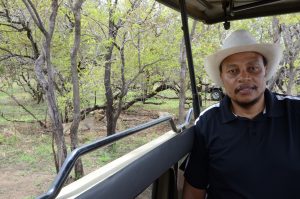
The Department of Animal, Aquaculture, and Range Sciences
The College of Agriculture, Sokoine University of Agriculture
Share this page

